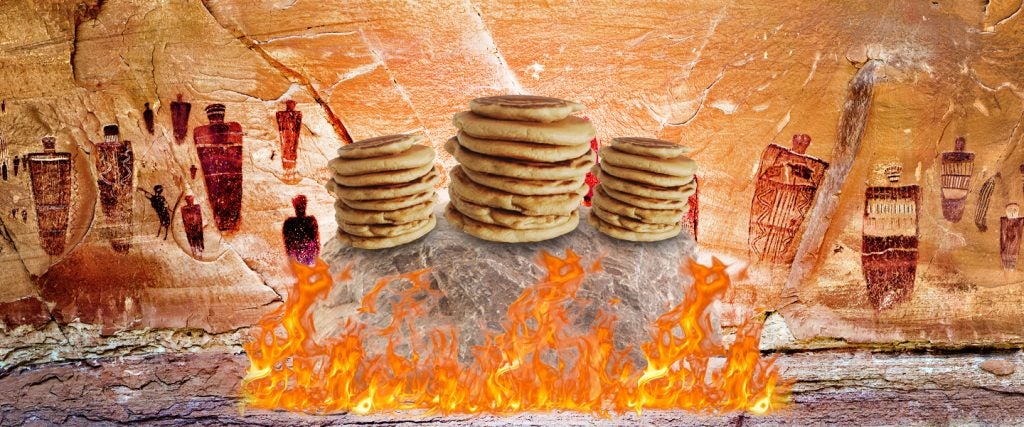Before the existence of IHOP, Denny’s and other pancake-slinging establishments, if you wanted a flapjack, you had to make it yourself. But who invented pancakes? As far as we know, it could have been your great, great, great, great, great, great, great, great, great, great grandparents (or some old guy named Ötzi).
In 2010, researchers discovered grinding tools used 30,000 years ago, and the gear was still coated in starch grains. This suggests that Stone Age cooks were making flour, and the analysts suspect that they were even mixing it with water and baking the resulting batter on hot, possibly greased stones. While the end product would have more likely resembled crackers than pancakes, the general idea was similar — a flat cake made of cooked dough.
Meanwhile, in 1991, Ötzi the Iceman, a well-preserved, 5,300-year-old mummy, was dug out of a glacier in the Italian Alps. Interestingly, he also clued us in to the early existence of pancakes, or at least something that resembled them. In addition to meat from red deer and ibex, his last meals included ground einkorn wheat (einkorn is the oldest wheat known to scientists), and because his stomach was also filled with bits of charcoal, we can conclude that the einkorn-based dish was probably in the form of a pancake cooked over an open flame.
Several thousand years after the death of Ötzi, 1st century Romans made fried concoctions called Alita Dolcia — Latin for “another sweet” — which were more like the pancakes we know and love today. These were made of milk, flour, eggs and spices, then sweetened with honey, and sold warm by vendors in your average market square.
Fast forward to England’s Elizabethan era, which lasted from 1558 to 1603, and English people were noshing on similar creations flavored with spices, rosewater, sherry and apples. In fact, their version of pancakes were eaten in massive stacks on Shrovetide, now known as Shrove Tuesday, a day of feasting before the beginning of lent. The dish served as a way to use up perishables like milk, butter and eggs before beginning the church-mandated fast.
Finally, people living in the early American colonies made pancakes with buckwheat or cornmeal, and Amelia Simmon’s American Cookery, published in 1796 and considered to be the first cookbook written by an American, featured two recipes for pancakes, one with molasses and another with eggs.
In short, as history shows, pancakes and humans have lived alongside each other for quite some time, which makes sense: After all, I’m not sure we’d have made it this far without something fluffy and sweet to look forward to in the mornings.

